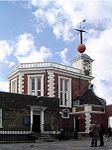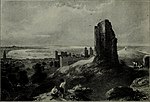Greenwich Park

Greenwich Park is a former hunting park in Greenwich and one of the largest single green spaces in south-east London. One of the Royal Parks of London, and the first to be enclosed (in 1433), it covers 74 hectares (180 acres), and is part of the Greenwich World Heritage Site. It commands fine views over the River Thames, the Isle of Dogs and the City of London (Simon Jenkins rated the view of the Royal Hospital with Canary Wharf in the distance as one of the top ten in England).The park is open year-round. It is listed Grade I on the Register of Historic Parks and Gardens. In 2020, it was awarded a National Lottery grant to restore its historic features, build a learning centre, enhance the park's biodiversity, and provide better access for people with disabilities.
Excerpt from the Wikipedia article Greenwich Park (License: CC BY-SA 3.0, Authors, Images).Greenwich Park
Duke Humphrey Road, London
Geographical coordinates (GPS) Address Website External links Nearby Places Show on map
Geographical coordinates (GPS)
| Latitude | Longitude |
|---|---|
| N 51.47669 ° | E 0.00013 ° |
Address
Greenwich Park
Duke Humphrey Road
SE10 8QY London (Royal Borough of Greenwich)
England, United Kingdom
Open on Google Maps










